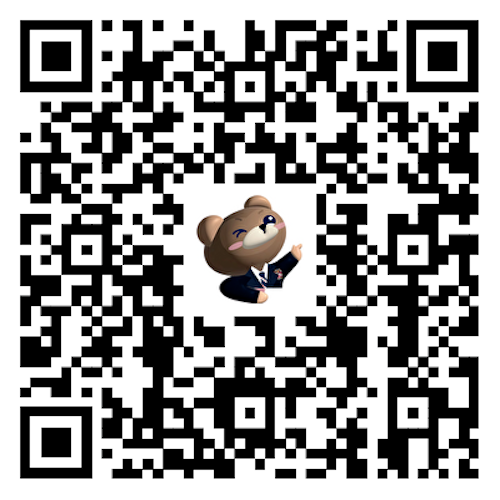Dulwich Insights | Using Technology to Enhance Student Wellbeing

In the first article of a three-part series, Crispian Farrow, our Chief Innovation Officer, discusses the role of technology in amplifying education opportunities that enhance student wellbeing.
The OECD Learning Compass 2030 attempts to define "the knowledge, skills, attitudes and values that learners need to fulfil their potential and contribute to the wellbeing of their communities and the planet". As the OECD notes, central to this vision is the role of student agency – which the organisation describes as "acting rather than being acted upon; shaping rather than being shaped; and making responsible decisions and choices rather than accepting those determined by others."
At all levels, systems of education either diminish or enhance opportunities that develop student agency, depending on their design. I believe we can and should be using technology to amplify the enhancing opportunities. To guide us in doing this, we must think of students as equal partners in the journey, co-constructing their learning along with us as educators and parents. If we get this right, there is reason to believe we will have a positive impact on student wellbeing.
Unpacking this, the OECD identifies several ways in which student agency is affected by educational levers in its Student Agency for 2030 concept note. Taking some of these observations as a starting point I will illustrate how technology influences these.
Global impact is now within reach
As the OECD states, "agency implies having the ability and the will to positively influence one's own life and the world around them". Technology has changed this "ability" by many orders of magnitude. For example, just 25 years ago, a significant amount of knowledge, skill and money was required to publish something online. Today, this is done in such a way as to reach millions – or even billions – of people at minimal cost using cheap devices and free apps. To see this in action you only have to look as far as Greta Thunberg or the many young stars of platforms like YouTube or TikTok.
It means that, if they are so inclined, students have access through technology to all the learning content they need to become as sophisticated as they desire in reaching their chosen audience. They could explore app development or videography, digital marketing or content creation. Mostly, this information is available for free.
In my experience, when given the space, students relish the impact attainable and the chance to share these skills and interests with us as trusted adults in their lives, so we should embrace their passion where we find it and weave it into our learning designs.
Bridging barriers and communities
Schools are sometimes thought of as walled gardens. Once a student passes through the gates in the morning a divide is crossed: one that separates the so-called "real world" from the "academic world". To address this, it is common for schools around the globe to provide a static report once a term, which is likely supplemented with a short parent-teacher conference slot once or twice a year. It is far from easy to participate in the rich learning journey that takes place between these punctuations from the wrong side of the wall – think of everyone from parents to members of the wider community.
Drawing on Salmela-Aro (2009), the OECD notes "Parents, peers, teachers and the wider community influence a student's sense of agency, and that student influences the sense of agency of his or her teachers, peers and parents – a virtuous circle that positively affects children's development and well-being." This idea, known as co-agency or collaborative agency, is one where technology can play a role to amplify what's possible and thus remove the wall. As the Covid-19 response shows, technology today can bridge these physical divides and render campus gates no obstacle. Learning can happen almost anywhere. New opportunities are thus presented to educators, parents and the wider community to truly partner with students in their learning.
It means the "mysterious" goings-on of a classroom are opened to those previously outside the room to see and, crucially, to engage in. This can stimulate conversations at home or involve the wider community in learning experiences that contribute to this virtuous cycle.
Why is this important? The OECD puts it thus: "When the community is also involved in children's education, children can learn about the opportunities for their future and also how to be engaged, responsible citizens, while the community can learn about the needs, concerns and views of its younger members."
In my own teaching, I can point to many occasions when community members carefully involved in student learning have had a significant influence on progress and engagement in a topic. These range from startup founders to university professors to NGO leaders on the other side of the world, each able to imbue students with new aspirations and self-belief.
Of course, these things can and have been achieved without the aid of technology, but technology can play an amplifying role in making these sorts of experiences and connections that much more accessible and commonplace. Students tell us how powerful these experiences are to them. Now that we know we can do it so easily with technology, we have an imperative to recognise and include these opportunities in their learning.
References:
Bowen, D & Hickin, L. (2020). An Educators Perspective. AI in Education. Available at: AI Education Podcast:An Educators Perspective (aipodcast.education) (Accessed November 2021).
Bowen, D. (2020). AI, Security and Scale. AI in Education. Available at: AI Education Podcast: AI, Security and Scale with guests Mike Reading and Blake Seufert (aipodcast.education) (Accessed November 2021).
Cope and Kalantzis. (2009) On the Complexities of Diversity. Available at: https://newlearningonline.com/new-learning/chapter-5/supproting-materials/kalantzis-and-cope-on-the-complexities-of-diversity (Accessed November 2021).
Cope and Kalantzis. (2020). The Digital Learner – Towards a Reflexive Pedagogy. Available at: https://www.researchgate.net/publication/343136868_The_Digital_Learner_-_Towards_a_Reflexive_Pedagogy (Accessed November 2021)
Cope and Kalantzis. (2020). The Digital Learner – Towards a Reflexive Pedagogy. Available at: https://www.researchgate.net/publication/343136868_The_Digital_Learner_-_Towards_a_Reflexive_Pedagogy (Accessed November 2021)
Gafney, L. and P. Varma-Nelson (2007), “Evaluating Peer-Led Team Learning: A Study of Long-Term Effects on Former Workshop Peer Leaders”, Journal of Chemical Education Research, Vol. 84/3, pp. 535-539, https://cpltl.iupui.edu/doc/Gafney%20and%20VarmaNelson_2007.pdf. (Accessed November 2021)
Greig, A. (2000), “Student-Led Classes and Group Work: A Methodology for Developing Generic Skills”, Legal Education Review, Vol. 11/81.
Hogan, K., B. Nastasi and M. Pressley (2000), “Discourse patterns and collaborative scientific reasoning in peer and teacher-guided discussions”, Cognition and Instruction, Vol. 17, pp. 379-432, http://dx.doi.org/10.1207/S1532690XCI1704_2. (Accessed November 2021)
Kellerman, D. (2020). Building a Community of Learners. Feb 5, 2020. Available at: Microsoft Innovate | Building a Community of Learners (Accessed November 2021)
OECD, The OECD Learning Compass 2030. Available at: Learning - OECD Future of Education and Skills 2030 (Accessed November 2021)
OECD, Student Agency for 2030. Available at: https://www.oecd.org/education/2030-project/teaching-and-learning/learning/student-agency/Student_Agency_for_2030_concept_note.pdf (Accessed November 2021)
Connect with us






